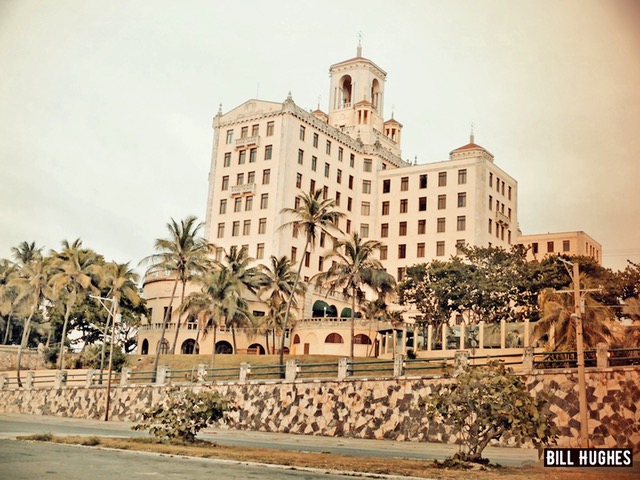Papa Hemingway in Cuba: Movie is a Winner
I’m a big fan of Ernest Hemingway. When the movie about his sojourn south of the border, “Papa Hemingway in Cuba,” first came out in 2015, I recalled checking it out. Now, in case you might be interested, it’s also available on Amazon Prime, among other online sites.
At the outset, the film, a drama, could have used some selective cutting. Still, I’m giving it a high recommendation. Literary buffs and Hemingway aficionados are in for a special treat.
The plot is told from the point of view of a Miami, Florida-based journalist, Denne Bart Petitclerc. He also wrote a successful non-fiction book with the same title as the movie.
I found the back story on Petitclerc, for movie purposes, a little too long. I thought: Who cares about his writing career and/or his then-girlfriend at a Miami tabloid? The screenwriter should have handled all of that in a cut-to-the-chase fashion. It was more than enough to know Hemingway was a cultural icon to Petitclerc, and that he later evolved into a father figure of sorts for him.
Petitclerc’s role (Ed Myers in the movie) is played by Giovanni Ribisi. At times, he was a little too stiff. However, Ribisi, though no Johnny Depp of John Waters’ “Cry-Baby” fame, was still good enough overall to get the job done.
The central figure is, of course, Ernest “Papa” Hemingway. He’s fifty-nine years old at the time. I think Adrian Sparks was just right as the bigger than life author with the mega, but ultra-sensitive, ego. He carried the film. First, Sparks looked the part and, secondly, he had the acting range to show some of the nuanced sides of the failing Papa.
The story was set in Havana, Cuba, in the late 50s. The right-wing dictator General Fulgencio Batista was then hanging onto his power by a thread. There was one bloody scene in the capital city, that revealed exactly what it was like to live under a fading Fascist regime. Hemingway’s sympathies, a la the Spanish Civil War, were decided with the emerging rebel forces.
The film, too, was shot in Havana and environs. Hemingway’s estate, Finca La Vigia, a beautiful space located 15 miles from Havana, is now a museum. It was utilized for much of the filming.

(As the fates would have it, I visited Havana, Cuba, in May 2016, thanks to President Barack Obama’s loosening travel restrictions to the then-Fidel Castro-led country, I got a chance to visit Finca La Vigia. It was easy after viewing Hemingway’s estate to understand why he was so enamored of it.)
Getting back to the movie – it captured the essence of the complex figure that was “Papa” in his declining years. A roaring drunk, often means, who was in decline both intellectually and physically. Suicide, which took his father’s life, was never far from his mind. You see enough of Papa’s “dark side” to know that he was a deeply troubled soul.
(Another author, Paul Johnson, relied on a description of Finca La Vigia given by Mrs. Durie Shevin. It was even darker than the film’s portrayal. Durie was a wife of one of Hemingway’s millionaire cronies, who regularly hung out at the compound. Johnson put it this way in his book, “Intellectuals”: The estate was “roamed by foul cats and bereft of hot water and Hemingway himself, stinking of alcohol and sweat, unshaven, muttering in the weird pidgin English he adopted. He was also addicted to the word ‘chickenshit.’”)
Shifting to Papa’s long-suffering wife #3 – Mary Welsh Hemingway. She was played superbly by the British actress Joely Richardson. She was a bitchy, nagging wife when called for. Mary also came off as a “hottie” in some of the swimming pool scenes. In one party at the estate, she also took on skillfully the persona of an enchanting Marlene Dietrich.
Some of the insults that the sharp-tongued Mary delivered to Papa, in the company of his closest cronies at the estate, were enough to drive a sensitive dude, like the novelist, to self-destruct and/or pull out his gun and shoot her! Fortunately, he didn’t. Mary liked her booze, too.
Shaun Toub is the poet Evan Shipman in the film, one of Papa’s genuine friends. Toub, an Iranian, is one darn good actor. He gives a compelling performance in a supporting role.
The American Mafia plays a bit part in this movie too, along with the FBI, and its long-dead director, the much-feared J. Edgar Hoover.
The musical score was nothing to shout home about, but the cinematography gets two thumbs up. I was hoping also to see my blue and white ’57 Chevy Bel Air make a cameo appearance on the streets of Havana. But, no such luck on that one.
The scenes between Papa and Myers were often moving when the famed novelist was the focus. This was particularly true, near the end of the film. Lots of good one-liners, too, in this flick.
I’m giving “Papa: Hemingway in Cuba,” 4 out of 5 Stars.

Bill Hughes is an attorney, author, actor and photographer. His latest book is “Byline Baltimore.” It can be found at: https://www.amazon.com/William-Hughes/e/B00N7MGPXO/ref=dp_byline_cont_book_1

